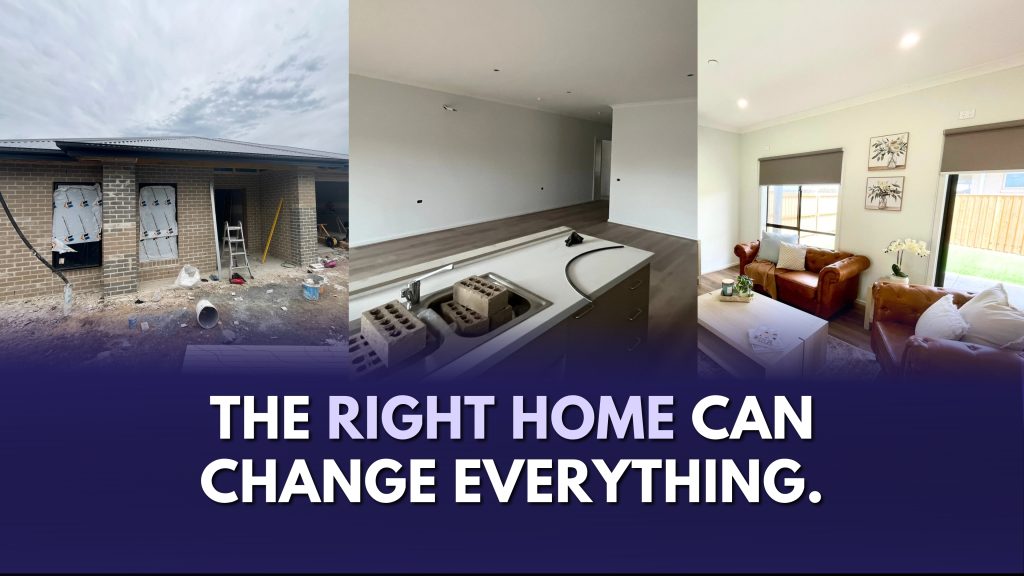When it comes to Home and Living supports under the NDIS, there’s no one-size-fits-all approach. Each participant’s circumstances, support needs, and goals are unique – and so are the housing options available to them. Whether it’s making home modifications, moving into Specialist Disability Accommodation (SDA), or even designing and building an SDA home from the ground up, the best choice depends on a careful assessment of needs, preferences, and long-term goals.
Understanding the Options
1. Home Modifications
For many participants, remaining in their current home – close to family, friends, and community is the most desirable outcome. Home modifications can make this possible by improving safety and accessibility. These modifications range from simple changes like installing grab rails and ramps to complex structural redesigns such as widening doorways or reconfiguring bathrooms.
NDIS-funded home modifications are designed to help participants live more independently and safely. However, they are approved only when the existing home can be suitably modified and when doing so is deemed reasonable and necessary. This option is also influenced by whether the participant owns the home. For many Australians living with disability who rent privately or reside in public housing, obtaining approval for modifications can be difficult, as property owners or housing departments must agree to the works before they can proceed.
2. Specialist Disability Accommodation (SDA)
SDA refers to housing designed specifically for people with extreme functional impairment or very high support needs. These homes incorporate accessible design features like wide corridors, step-free access, reinforced walls, and advanced assistive technology infrastructure. SDA can be offered as single-occupancy or shared homes and may include 24/7 care through Supported Independent Living (SIL) or other arrangements.
SDA properties are categorised into four design types:
• Improved Liveability – For participants with sensory, intellectual, or cognitive impairments. Homes under this category include design elements such as enhanced lighting, contrast, and clear lines of sight to support wayfinding and safety.
• Fully Accessible – Designed for individuals with significant physical impairments, offering step-free access throughout, accessible bathrooms and kitchens, and features that support wheelchair mobility both inside and outside the home.
• High Physical Support – For participants who require a very high level of personal care and physical support. These homes include all Fully Accessible features, plus structural provision for ceiling hoists, emergency power backup, and advanced home automation for safety and independence.
• Robust – Built for participants whose behaviours may pose a risk to themselves or others. These properties include durable materials, soundproofing, and secure spaces that reduce the risk of injury and minimise maintenance needs, while still promoting comfort and dignity.
3. Building Your Own SDA
For participants and families who want greater choice and control, building a custom SDA property is another option. This allows complete personalisation of design, location, and accessibility features to align with individual lifestyle goals. While this process requires significant time and planning, it can deliver a deeply rewarding outcome, a forever home that offers both safety and independence.
Factors to Consider
When choosing between modifying your home, moving into SDA, or building one yourself, consider the following:
• Functional needs: How complex are your mobility, sensory, or medical requirements?
• Current home suitability: Can your existing home be safely and effectively modified?
• Support arrangements: Do you need full-time support or specific staffing ratios?
• Community and lifestyle: Are proximity to family, shops, transport, and recreation important?
• Long-term goals: Are you seeking a temporary or permanent housing solution?
• Funding eligibility: SDA funding is only available for participants with significant and ongoing functional impairment and high support needs.
Can You Access SDA After Receiving Home Modifications?
A common question among participants and families is whether accessing home modifications means they can’t later receive SDA funding. The answer is no – but it’s not a simple process.
While receiving NDIS-funded home modifications doesn’t automatically disqualify you from applying for SDA later, the bar for SDA approval is significantly higher once modifications have already been funded. The NDIA will require substantial, evidence-based justification explaining why the modified home is no longer suitable or why the participant can no longer safely remain in that property.
This often involves:
• Detailed occupational therapy assessments showing that the home no longer meets the participant’s needs.
• Reports outlining health, safety, or environmental risks that can’t be addressed through further modifications.
• Documentation demonstrating that SDA is now the only reasonable and necessary option for safe and sustainable living.
Without clear, comprehensive evidence, SDA funding approval after home modifications can be difficult to obtain.
Making an Informed Decision
Choosing the right housing pathway under the NDIS means balancing independence, safety, and long-term sustainability. Participants should take time to explore all available options, visit SDA properties, and seek professional advice from occupational therapists, support coordinators, and SDA providers who understand the process.
Empowered decision-making, grounded in clear information and collaborative planning, is the foundation of sustainable housing outcomes under the NDIS. Whether that means upgrading your current home or moving into a purpose-built SDA property, the goal remains the same – a home that supports your independence and enhances your quality of life.

